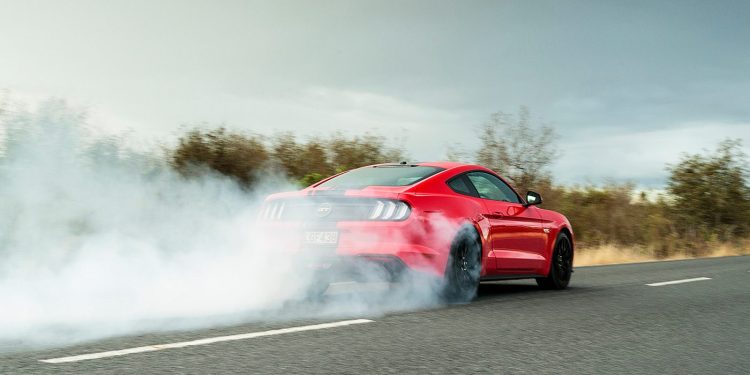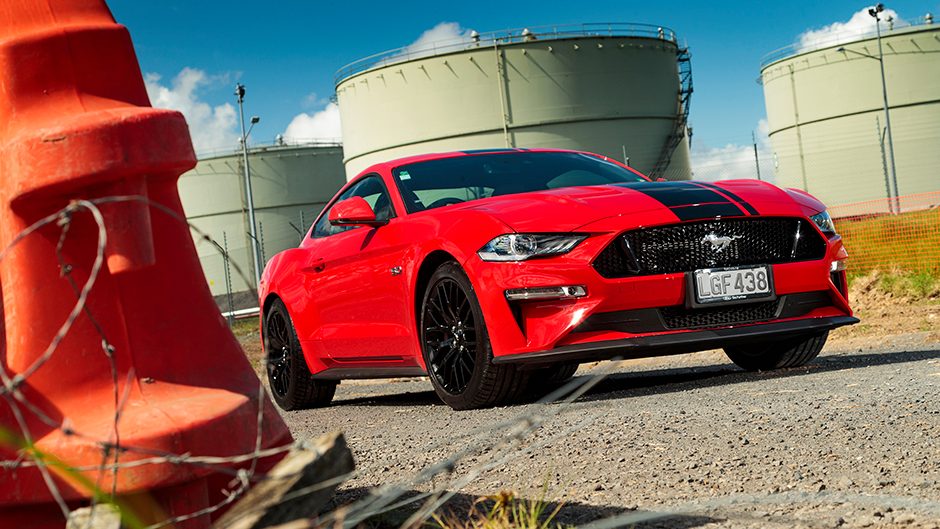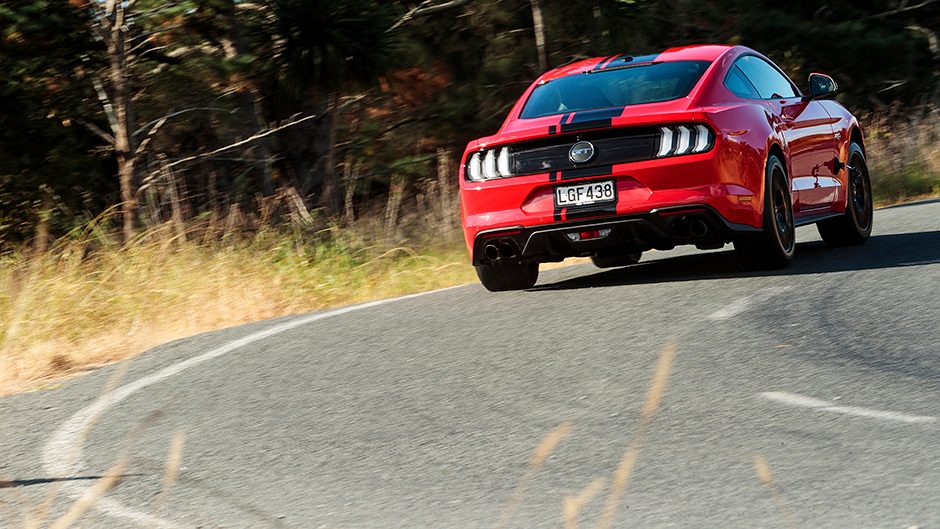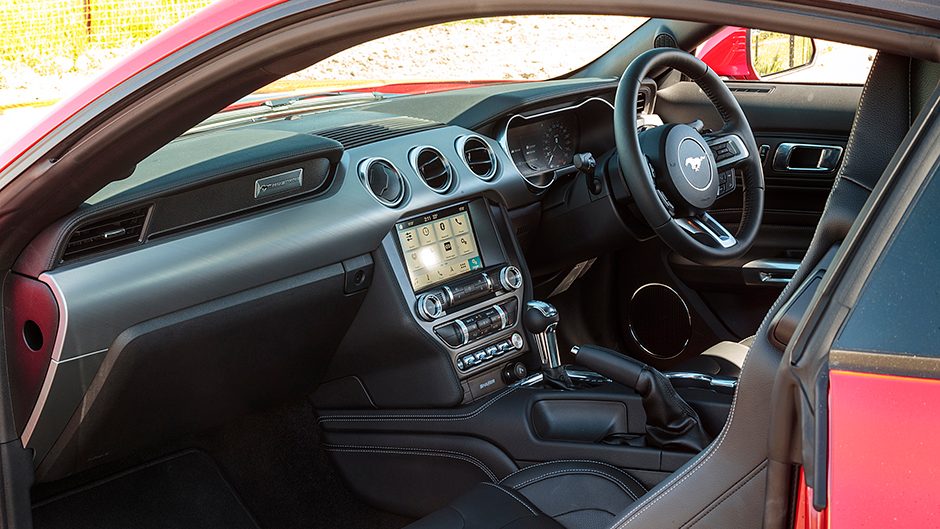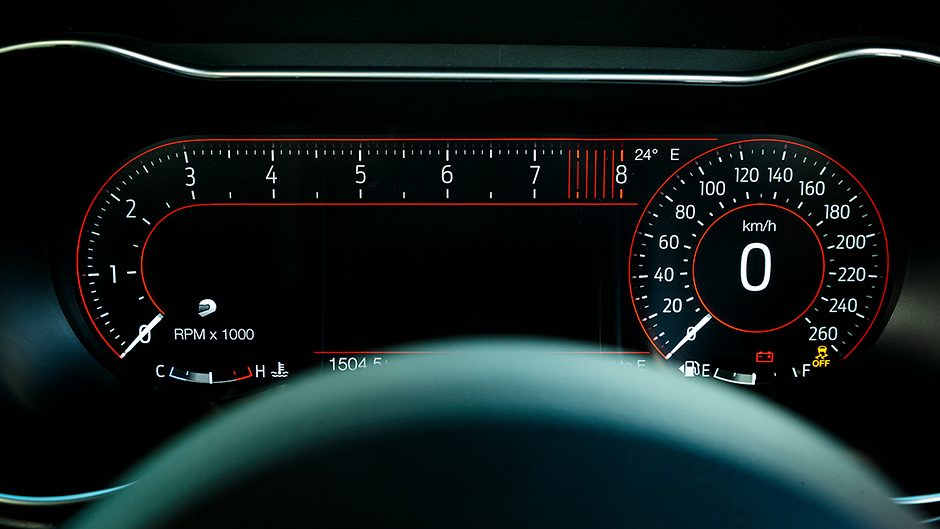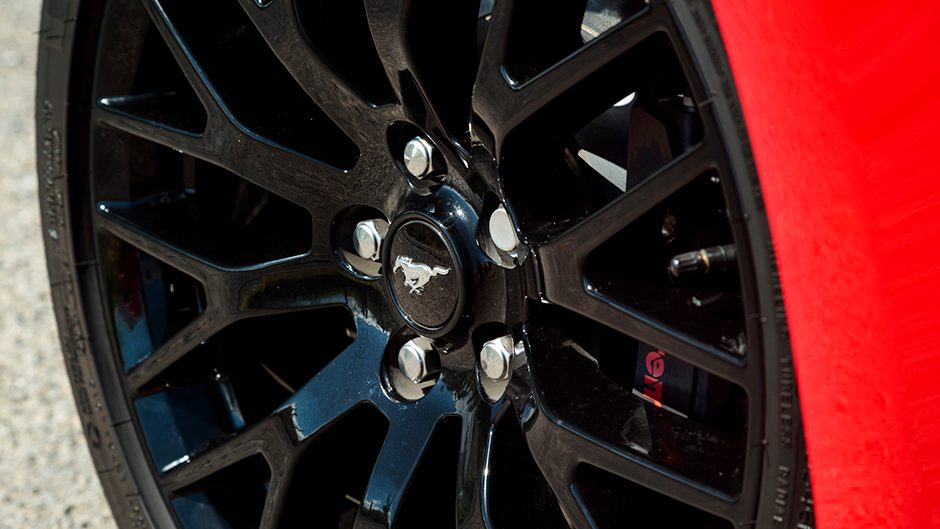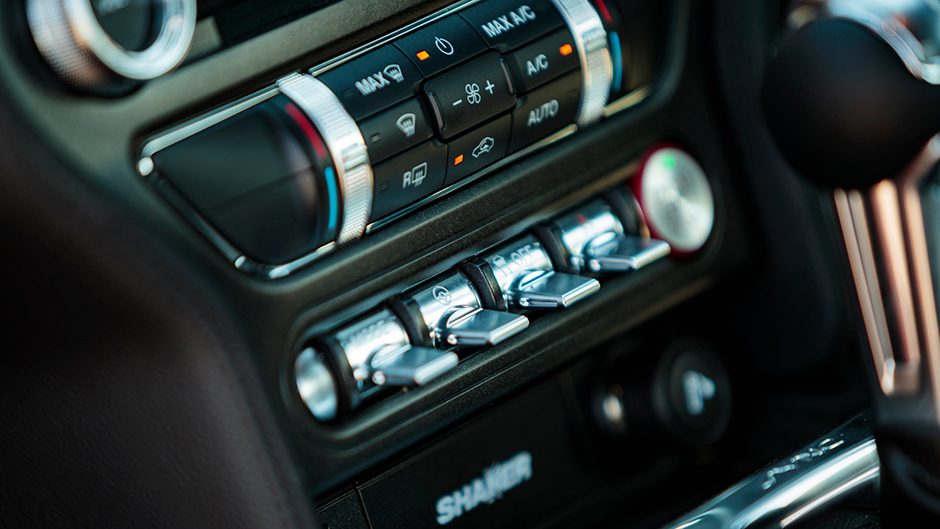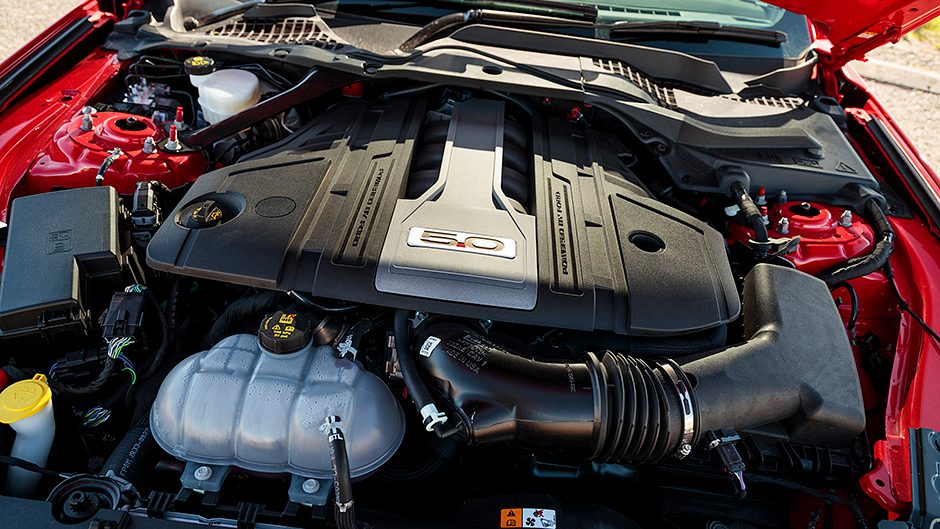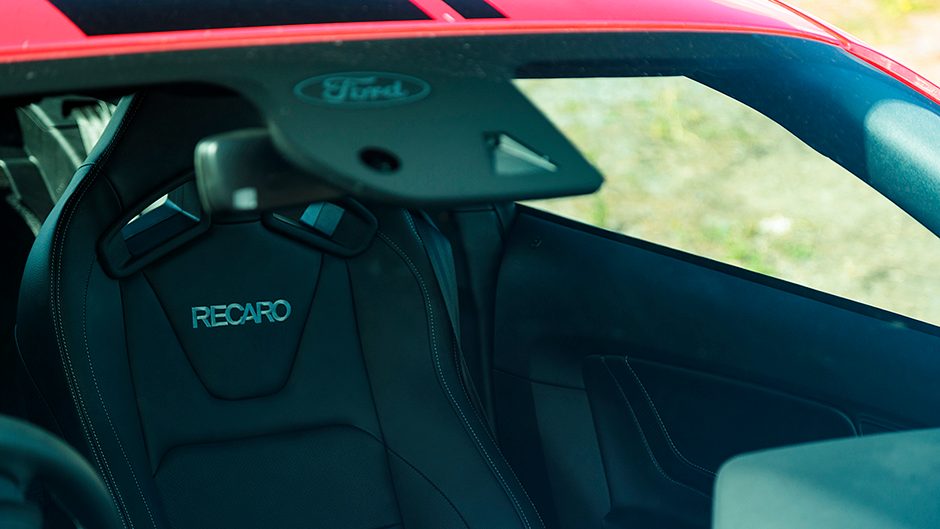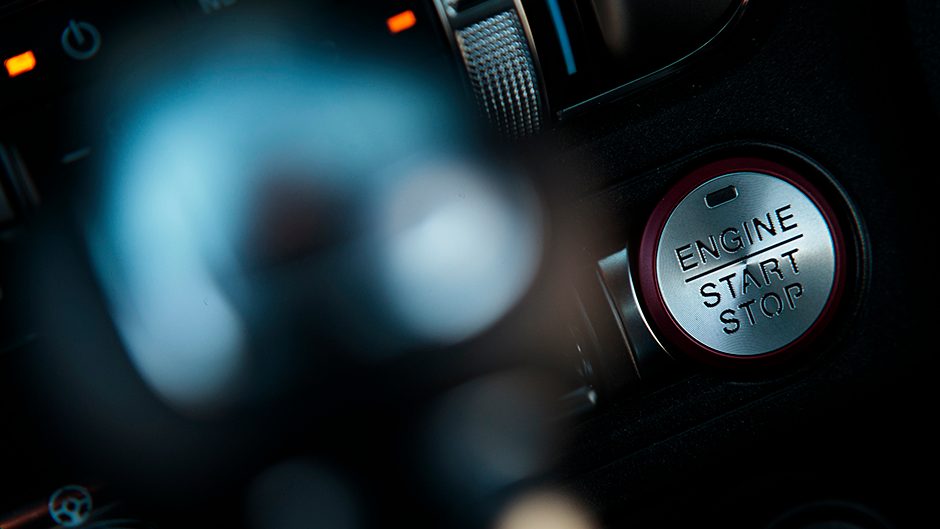2018 Ford Mustang GT review
Words Kyle Cassidy | Photos Tom Gasnier
While the new-for-2018 Mustang has a few more ponies under its hood, it’s Ford’s new 10-speed auto that’s the talking point. Is it a case of too many cogs spoiling the broth?
Ford’s latest Mustang has proved popular, more than 1500 Kiwis having parked one in their garage since it was introduced here in 2015. In 2018, it arrives with improved speed and handling and a lot more gears. Ford has even added some active safety features too, in an effort to improve crash creds.
The new front end styling incorporates a reworked bonnet, bumper and LED headlights while at the rear there are new LED tail lamps, the bumper is revised and the GT gets a quartet of exhaust tips. Nought has changed in profile, though there is a new optional forged alloy for GT buyers. Michelin now supplies the rubber with grippy (and somewhat loud) Pilot Sports adorning the rims.
As mentioned, Ford has added the previously AWOL safety gear with AEB, adaptive cruise, active lane keeping and auto high beams now standard. The cruise is easily set but once it dips below 20km/h, you’re on your own while the lane keeping isn’t as proactive as other systems at keeping you centred but is also less intrusive.
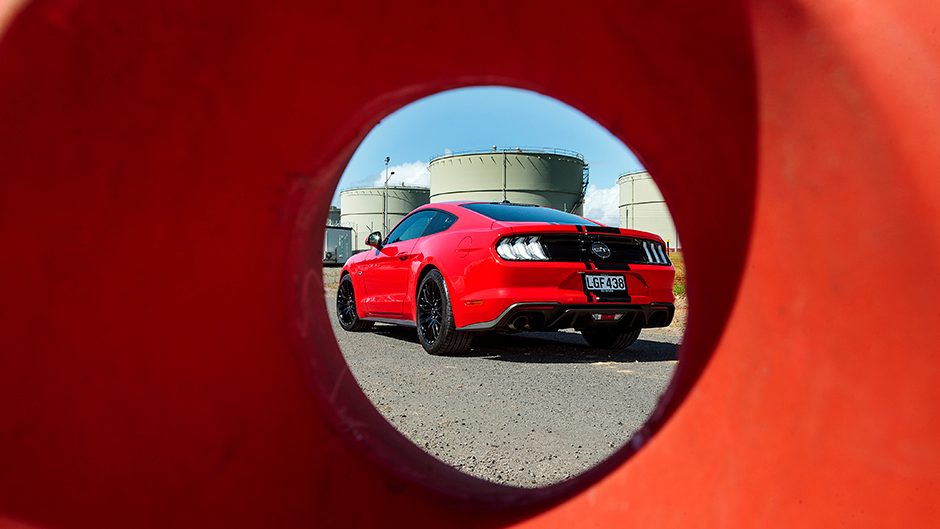
As to improving the woeful two-star crash rating, Ford says while the overall structure hasn’t changed, they’ve added safety features, and a new test result is likely to be confirmed later in the year, though the firm isn’t saying what it is expecting.
Aussie cricketers will no longer be able to use the Mustang’s interior plastics to scuff up the ball en route to the match as most of these rough surfaces have been sorted, the door tops and centre console now lined with a soft covering and there are padded knee bolsters on the sides.
The standard seat has been reshaped, and Fastback buyers can option a set of Recaros but these lose the heating and cooling function of the standard seats. The centre stack remains unchanged apart from the inclusion of Ford’s Sync3 infotainment system which features CarPlay and Android Auto.
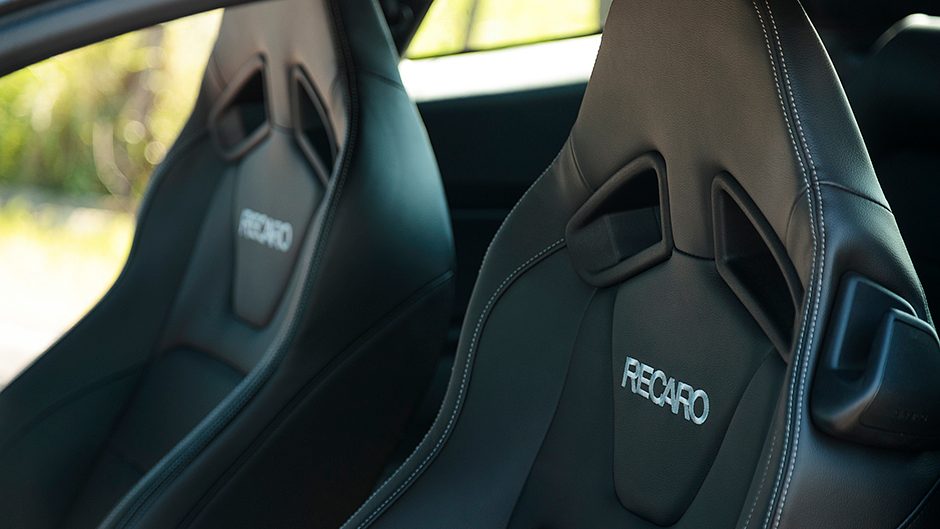
A new customisable 12-inch TFT instrument panel features Normal (a modern take on the classic twin-dial set-up), Sport and Track (digital speedo with a strip tacho) displays, and you can play around with the colour and minor gauge readouts. A new My Mode is a configurable set-up tuning the driveline, steering and exhaust note to your preferences.
It’s all a bit of a fiddle though as they’ve given Mustang more functions but there are only so many buttons to control it all. The trip computer has been buried in the sub-menus but the numbers displayed there (somewhere between 13 and 20L/100km) clearly aren’t as important as G forces achieved or the temperature of the intake manifold, information which seems easier to come by.
NZ-spec GTs come with the Performance Package which adds a firmer suspension tune, the Brembo six-pot brake set-up, better cooling, a Torsen LSD and the Michelin rubber. The Active Valve Performance Exhaust is also standard. It has four modes; Quiet (no thanks), Normal (loud), Sport (louder) and Track (Nascar).
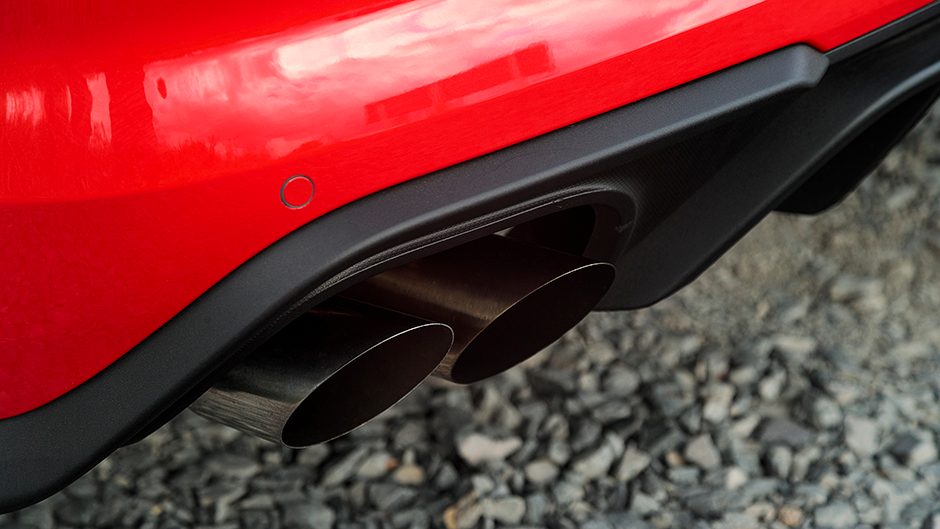
This Mustang has plenty of rumble, to the extent most owners will no longer need to fit aftermarket pipes. It starts with a throaty roar, signalling it’s both more powerful and much louder. The GT now really sings when gassed, even in Normal mode at around town speeds, and simply roars at 7000rpm. Seems not everyone appreciates the sound of thunder tearing down their road, but schoolboys love it.
The Mustang’s shockers and sway bars have been retuned for better control, while some fiddling at the rear has helped the steering response and reduces understeer dramatically. You can also go next level with the $3000 option of MagneRide magnetic dampers. This particular Fastback was riding on standard dampers but showed a much keener interest to corners than the old Nag. Most of the body lean the previous car had when heading into a bend has been banished and the GT is now set for cornering action as soon as you point it into the bend.
The front end resolve is sterner as well – you can really lean on those Michelins and the reserves of grip are plentiful. The steering has just the right amount of heft in its sport mode, and though it could be more telling, the GT changes direction cunningly for what is a heavy coupe. With a long travel throttle pedal, wide tyres and a linear power delivery, it’s easy enough to manage the power-on traction, though bumps on the corner exit will rouse the electronics.
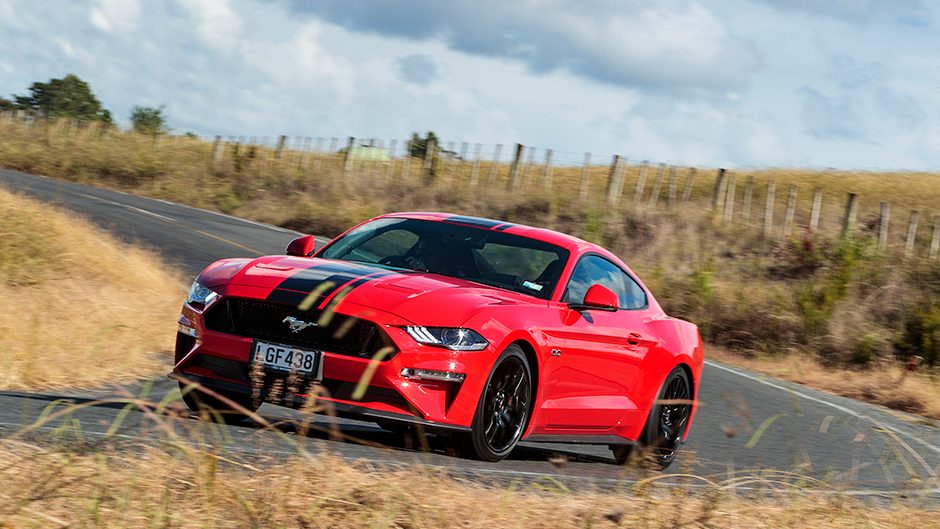
The V8 has been enlivened too, the five-point-oh now pumping out as much power as the General’s 6.2-litre small block. It’s grown in size with the cylinder liners being replaced by a spray on coating and so the capacity now measures 5038cc. Along with a revised crank, new cylinder heads feature dual injection with both port and high pressure direct fueling, and additional knock sensors for improved spark control. With a bump in compression to 12.0:1, the result is 339kW (plus 33) at a bellowing 7000rpm (it’ll keep going to 7500) with 556Nm at 4600rpm, up from 525, those numbers reliant on 98 octane.
These increases are well managed by the 10-speed auto. This box is all new, with the latest tech to shrink component size and weight while the clutch packs and solenoids are all programmed to act quick smart. With small steps between the ratios, it works to keep the engine in its optimal zone and helps alleviate the peaky nature of the V8.
Where the old GT struggled with an awkward gap between second and third, now there’s always an optimal cog available and delivered to keep this V8 happy. The auto spits out fast but polished shifts so as not to upset the power delivery and the car’s balance. This gearbox is not shy of changing gears, so those used to the old six speeder might just find it too busy at first. It works best when you’re really giving it some though.
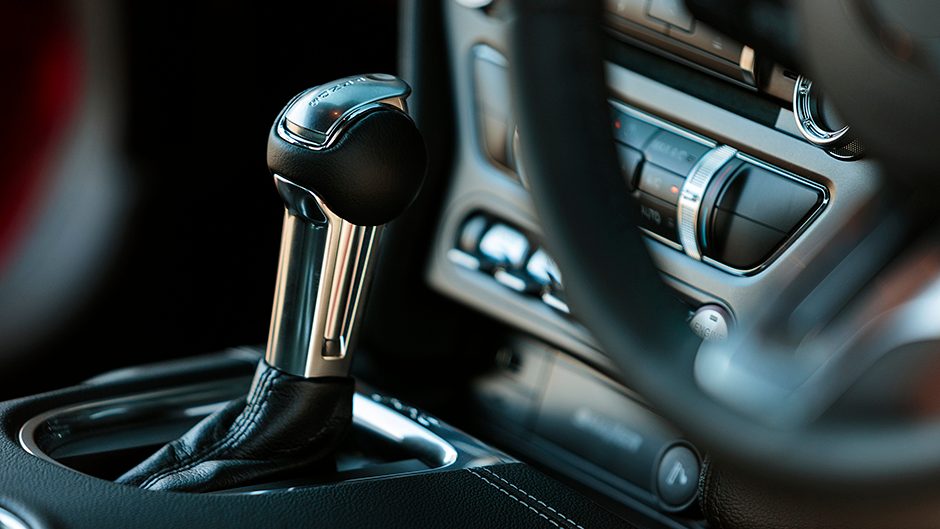
This V8 loves to rev, and the auto is superb at keeping it above 4000rpm. Let that V8 spin and the auto executes a crisp shift just beyond 7000rpm and the next cog keeps the V8 screaming in the power zone. Hit the picks and it’ll shift down a couple of ratios, putting you in the heart of the torque to tap that twist for maximum thrust out of the curve. It occasionally gets the selection wrong but there’s always the quick acting paddles for ultimate control.
The ‘box’s best trick is skip shifting. Cruising at 100 in tenth, the V8 is ticking over at 1600rpm, but pin the gas and in less than a second the box has dropped to third, the V8 is suddenly pumping away at 5000rpm and the GT is happily hauling.
Ford talks up a 0-60mph time of under four second thanks to a Drag Strip setting which bangs through the shifts at full noise. It’s all dependent on available traction of course. We netted a couple of runs in the high fours, but it seems fanciful to think this will run under the four-second mark. There’s no doubting this is a bolter though with the GT shaving more than half a second from its 80-120km/h time, that slick shifting box the key.
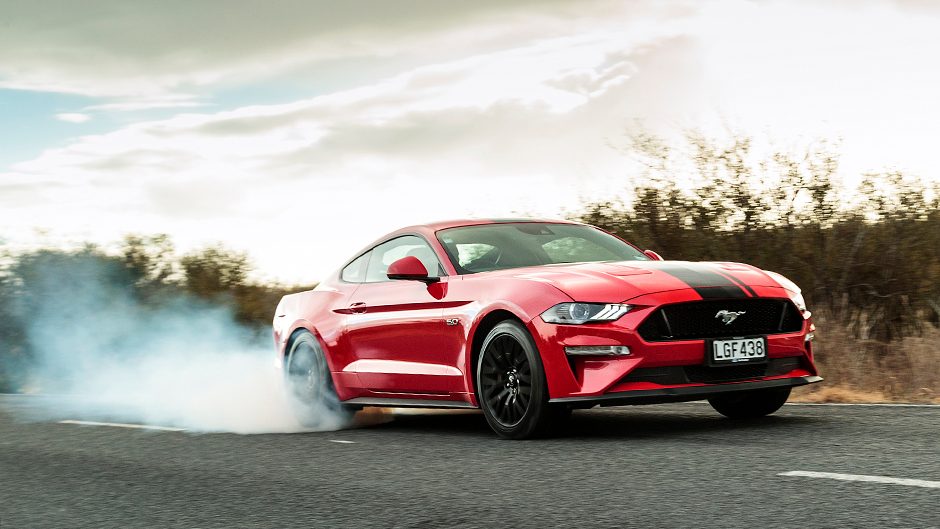
Back in Normal, the V8 is happy to lug about below 2000rpm. The auto hooks into 10th at speeds below 100km/h, and can pull eighth around town too. It’s generally refined in traffic, creeps seamlessly for easy parking and will kick down smartly when you give it some gas. The improved handling means the ride does have a few lumps in it and while the exhaust note never drones, if it’s a bit loud for the occasion quiet mode does shut it up.
Prices have risen between $2000 and $3000, though all models now feature the 10-speed auto. The turbo Fastback is $62,990, the Convertible $5000 extra. The GT Fastback is $79,990 with the no-cost option of a six-speed manual, while the GT Convertible goes for $84,990.
We reckon if your 2016 GT is getting on, you’ll appreciate the improvements here and for those who tried the Mustang previously but thought it a bit soft, this faster charging GT will now better fulfill your sportscar needs.


